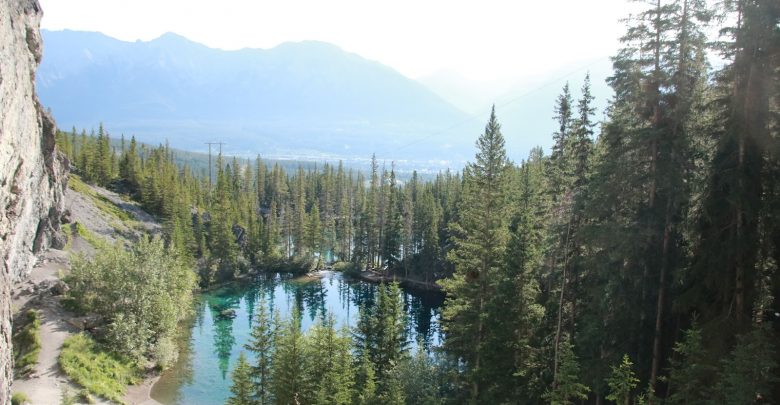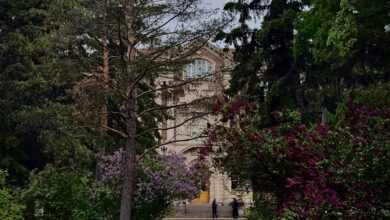 Haley Dang
Haley DangAccording to a U of A professor, the lakes in the Canadian Rockies have been losing their turquoise colour as a result of fading glaciers, rising tree line elevation, air pollution, and wildfires.
U of A Professor Rolf Vinebrooke has researched why mountain lakes are experiencing a change of colour. As described by Vinebrooke in an essay written for the fourth State of the Mountains Report by the Alpine Club of Canada, the disappearing turquoise colour of lakes in the Canadian Rockies is a result of multiple human-driven factors. There are three primary colour changes observable in these lakes.
“When you fly over [these lakes] you don’t really get a sense of the fact that a lot of them are actually changing in colour as we speak,” Vinebrooke explained. “So I broke it down into three different types of colour changes and each one has a different type of driving cause.”
“We’ve got mountain lakes going either in the blue direction, brown direction, or the green direction.”
Vinebrooke explained the term “clarification,” which is one of the types of colour change where the lakes turn blue. This particular colour change is connected to melting glaciers in the area.
“A lot of these lakes we noticed, using different lines of evidence, are becoming less and less turquoise and turning blue because a lot of these glaciers that are feeding into them have been melting rapidly,” he explained. “In some cases [these glaciers] have gotten much smaller, and in some cases disappeared.”
The second type of colour change is brownification. This colour change is a result of tree lines advancing to higher elevations because of global warming.
“You get a lot more of these alpine lakes, where instead of being surrounded by rocks, they are being increasingly surrounded by small forests and developing soils,” Vinebrooke said. “Those trees and soils, with rainfall, contribute brownish material in the lakes.”
The third type of colour change observable in these lakes is greenification. According to Vinebrooke, greenification is primarily caused by air pollution that contributes nitrogen to rainfall.
“So a lot of lakes are turning more green because of two things… there is a lot of air pollution that contributes nitrogen to rainfall,” he said. “The nitrogen falls on these lakes and acts as a fertilizer in some cases. So these lakes start becoming more productive, [which means] you have more plant growth [and] more microscopic green algae growth.”
Another cause of greenification is phosphorus, which is another type of fertilizer for plant growth. According to Vinebrooke, wildfires emit ash containing phosphorus into these lakes, further contributing to greenification.
The wildlife in these lakes are also impacted by this colour change. Vinebrooke explained how the change of colour can expose these organisms to harmful ultraviolet radiation.
“[When] you get a colour change, the lake suddenly becomes lit up with a lot of sunlight including potentially harmful, DNA damaging, ultraviolet radiation,” Vinebrooke said. “If you’ve been living in a cloud of turquoise for centuries, and all of a sudden somebody turns that off, you’re probably not that well adapted to intense ultraviolet radiation, particularly at high elevations.”
Vinebrooke said that with the current climate change and pollution, the lake’s colour change may be inevitable. However, the process can be slowed so that “the larger [lakes] still will somewhat continue to be in existence.”
He concluded by mentioning that we are entering into a new geological era, where global change is primarily driven by humans.
“[Previous geological eras] were geologically driven,” Vinebrooke described. “Now what a lot of scientists are talking about is that [humans] are doing so many different types of things, particularly with the melting of glaciers and causing changes in how lakes and mountains actually behave, that we are entering into a new geological era that for the very first time has been driven by humans.”



